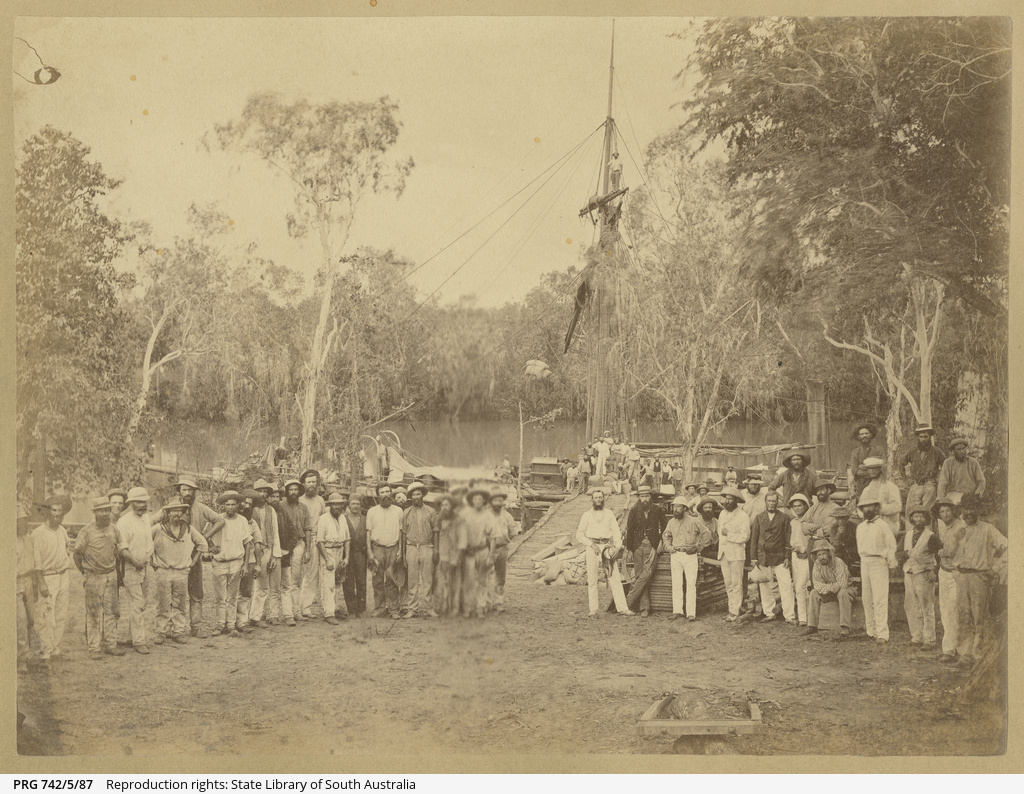
When the wires of the Overland Telegraph Line joined at Frews Ponds on 22 August 1872 it was hailed as a technological marvel and engineering feat.
The Australian Overland Telegraph Line stretched 3,200 km connecting Port Darwin in the Northern Territory to Port Augusta in South Australia. The OT Line radically transformed communications within Australia and out to the world. Like many innovations in our nation’s history, the OT Line has a particular South Australian story.
The OT Line followed the route blazed by John McDoull Stuart and his expeditioners a decade earlier through the heart of the continent. A strange and inhospitable place to the Europeans, it was known and named land to many First Nations language groups who had flourished there for countless generations. South Australia annexed the Northern Territory in 1863, and in 1870 secured the route of the overland section of the proposed telegraph line that would join with the undersea cable from Java, and from there on to Europe and Britain.
Charles Todd, South Australia’s then-Postmaster General and Superintendent of Telegraphs, managed the project. Over two years, teams worked in three sections, relying on horses, bullocks and camels to transport supplies and equipment. On 22 August 1872, Todd was camped near Central Mount Stuart and received telegraphed messages of congratulation from throughout the Australian colonies. Communication with Britain became possible on 21 October, an event celebrated with banquets in Adelaide, Sydney and London. News that had previously taken two months to reach the Australian colonies could now be received in hours.
In 2022 South Australia and the Northern Territory mark the OT Line 150th anniversary as a feat of ingenuity, a marker of colonisation and transcultural relationships, as an infrastructure project unparalleled in Australia at the time, and finally as a revolution in communications.
Follow the History Trust Facebook page and the OTL 150 Anniversary website for more research and news of events marketing this significant piece of Australia’s history and nation building.
Check out the other History Festival content in WeekendPlus:
- Welcome to South Australia’s History Festival from Greg Mackie OAM, Chief Executive, History Trust of South Australia
- South Australia’s History Festival is back in 2022!
- Top picks in Adelaide city
- Top picks in regional South Australia
- 5 Ways to Wellbeing
- North Adelaide FC celebrates 100 years
- The Long Flight Home – SA’s Vickers Vimy
- Open Doors to History
- Family friendly events to explore together
- Get involved in the Penfolds History Hunt
- Competition: Win tickets to ‘Lockdown! How We Quarantined Before COVID’ tour


